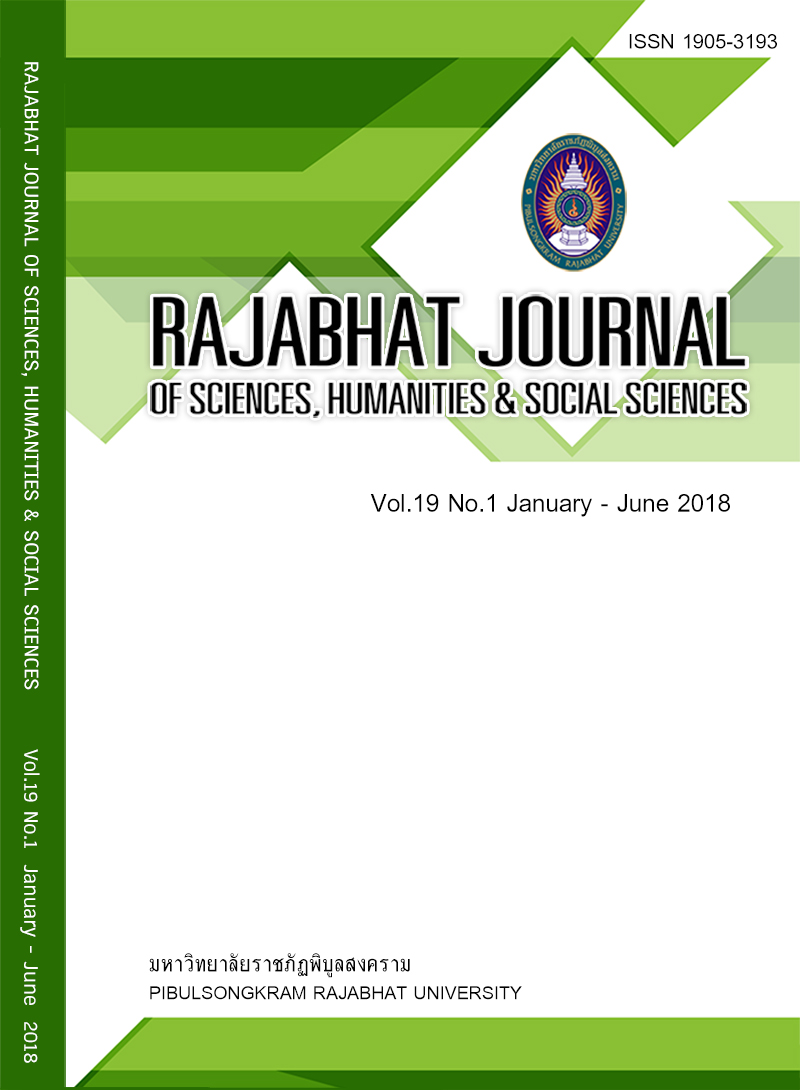DETERMINATION OF LEAD (Pb) CONTENT IN TAPIOCA STARCH USING NEAR INFRARED SPECTROSCOPY
Keywords:
Lead, Tapioca starch, FT-Near infrared spectroscopyAbstract
This research was to study the potential of FT-near infrared spectroscopy (FT-NIRS) as a nondestructive way for tapioca starch investigation. The NIR spectra ranged between 1,008-2,480 nm by partial least squares (PLS) with cross-validate method analyzed by Unscrambler software version 10.1. For Lead content in tapioca starch sample ranged of 0.01 ppm to 0.50 ppm calibration and validation set n = 86 for lead contamination measurement in tapioca starch. 10 factors were studied and found that the coefficient from determination calibrations and validation set were 0.96 and 0.90 respectively. The accuracy indicated how close the measured value was from its actual value. The SEC and the SEP was 0.02 and 0.4% with the Bias 1.4x10-9. The experiment indicated that Pb content measured with NIRS in tapioca starch considered to be used to acquire standard method. NIRS required no sample destruction method and applied for a fast inspection.
References
Bagchi T, Sharma S, Chattopadhyay K. Development of NIRS models to predict protein and amylose content of brown rice and proximate compositions of rice bran, Food Chemistry. 2016; 191: 21-27.
Chen H, Song Q, Tang G. et al. An optimization strategy for waveband selection in FT-NIR quantitative analysis of corn protein. Journal of Cereal Science. 2014; 60(3): 595-601.
Chylinska M, Szymanska C, Kruk B. Study on dietary fibre by Fourier transform-infrared spectroscopy and chemometric methods, Food Chemistry. 2016; 196: 114-22.
Hell J, Pruckler M, Danner L. et al. Comparison between near-infrared (NIR) and mid-infrared (ATR-FTIR) spectroscopy for the multivariate determination of compositional properties in wheat bran samples, Food Control. 2016; 60: 365-369.
Machado A, Gama A, Barros NB. Partial least squares prediction of the first hyperpolarizabilities of donor–acceptor polyenic derivatives, Chemical Physics. 2011; 388(1-3): 19-22.
Magwaza LS, Messo NS, Laurie S. et al. Development of NIRS models for rapid quantification of protein content in sweetpotato [Ipomoea batatas (L.) LAM.], Food Science and Technology. 2016; 72: 63-70.
Moros J, Llorca I, Cervera M. et al. Chemometric determination of arsenic and lead in untreated powdered red paprika by diffuse reflectance near-infrared spectroscopy, An International Journal Devoted to All Branches of Analytical Chemistry. 2008; 613(2): 196-206.
Pojic M, Mastilović J, Palic D. et al. The development of near-infrared spectroscopy (NIRS) calibration for prediction of ash content in legumes on the basis of two different reference methods. Food Chemistry. 2010; 123(3): 800-805.
Redaelli R, Alfieri M, Cabassi G. Development of a NIRS calibration for total antioxidant capacity in maize germplasm, Talanta. 2016; 154: 164-168.
Sanchez T, Ceballos H, Dufour D. et al. Prediction of carotenoids, cyanide and dry matter contents in fresh cassava root using NIRS and Hunter color techniques, Food Chemistry. 2014; 151: 444-451.
Teye E, Huang X, Sam-Amoah L. et al. Estimating cocoa bean parameters by FT-NIRS and chemometrics analysis. Food Chemistry. 2015; 176: 403-410.
Zixia H, Wei T, Juanj F. et al. Multivariate calibration of on-line enrichment near-infrared (NIR) spectra and determination of trace lead in water. Chemometrics and Intelligent Laboratory Systems, 2009; 98(2): 195-200.
Downloads
Published
How to Cite
Issue
Section
License
Each article is copyrighted © by its author(s) and is published under license from the author(s).










